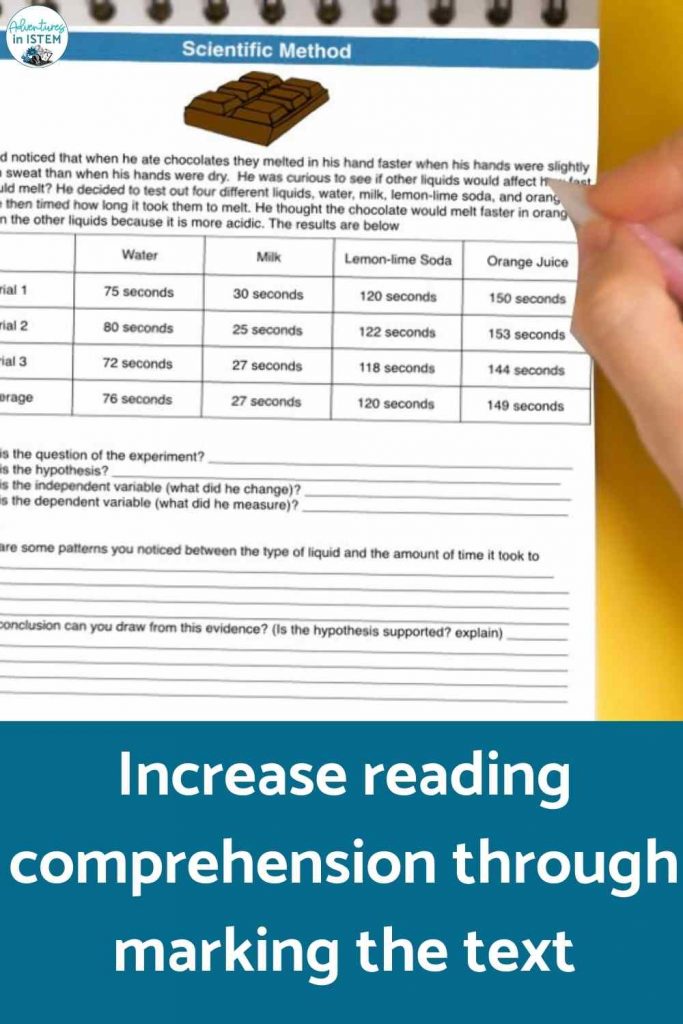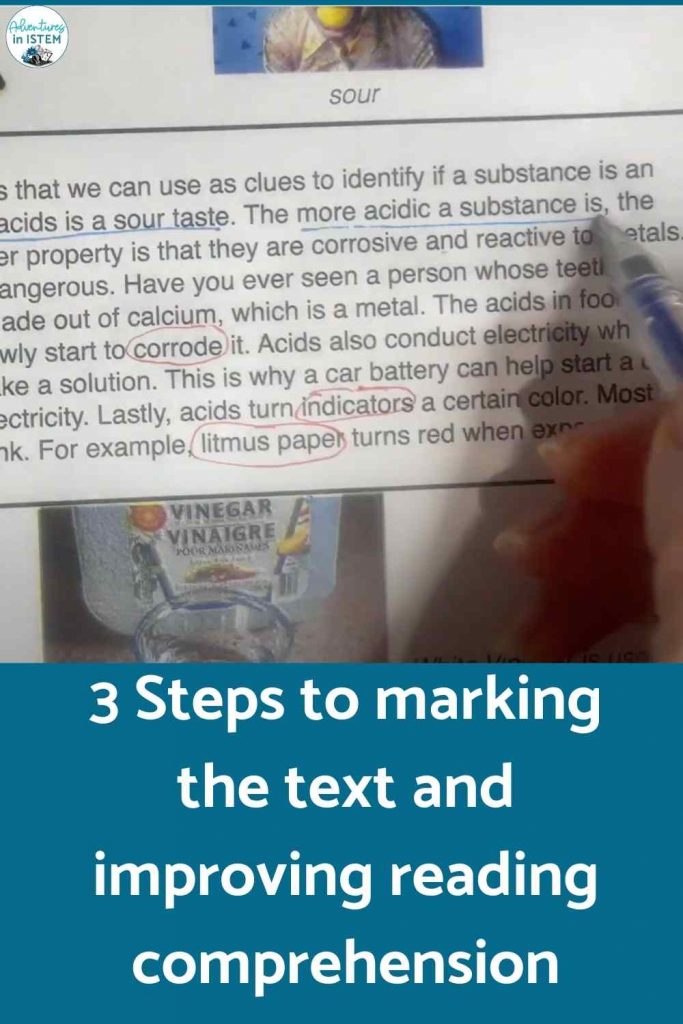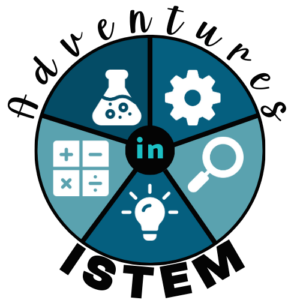Reading expository text is different than reading a novel. It is more complex, more challenging, and not as exciting. Many students struggle with reading the information and comprehending it. Having them mark the text can be a simple yet effective strategy to help with science reading comprehension.
Three simple steps to Marking the text
Step 1: First Read
The first time I have students reading the information, I don’t have them mark anything. Instead, I want them to listen to the words and think about the content. What information do they already know, what information is confusing, are there any words they struggle with. I go over the topic of the reading and provide a guiding question for them to keep in mind as they read. Sometimes I will do the read-aloud, and other times I will randomly call on students to read for the class or have students volunteer to read a section. I feel that it is essential to get a feel for the content before diving in and going deeper with understanding it.
Step 2: Key Words
During the second read-through, I like to have the students highlight or circle key vocabulary words or words they don’t understand. The first few times we do this, I will model it to get an idea of what words would be necessary based on the topic and the guiding question for the reading. Then I will have them work in pairs as they read, and together they will mark the keywords. The pairs then discuss it with another pair so that there is a group of four and then share what they marked with the class. During this time, we talk about how some students might have more words marked than others based on their previous knowledge of the topic. And I make sure that everyone has the key vocabulary words of the concept marked.
Step 3: Key Details
The third time they read the text, they underline the essential details to help answer the guiding question. These should be the important concepts the text is covering. The first few times we do this, I again model what to underline. I explain why I underlined a particular sentence or phrase and linked it to the guiding question. They work in pairs to finish off the rest of the text and share their ideas with another pair for a group of four. The group then shares out what they marked. As a class, we look at the different patterns of the other groups marked and agree on which key details are the most important for answering the guided reading.
What to do after they mark the text
Creating Notes
Once they have gone through and marked the text, they would have read the article, chapter, or guided reading at least three times by then. You can then have them go back in for a fourth read but only focus on what they circled and underlined. They can then put that information into notes. You can then have them circle the keywords in their notes to spotlight them for the students. You could give them notes with questions on a side all ready to go for your struggling students or have them create their questions based on the information they are writing down in their notes.
Comprehension Worksheet
After my students do the multiple reads and create their notes, I like to see if they understand. I want to know whether they know the basic information from the reading and then apply it. For this purpose, I have them fill out a worksheet with some low-level define and identify questions, and some apply questions.
These simple guided readings that included notetaking templates, comprehension worksheets, and extension task card activities can be found here: https://adventuresinistem.com/product-category/science-readings/







